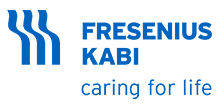
Shijiazhuang No. 4 Pharmaceutical Co., Ltd.
概览
标签
| 疾病领域 | 数量 |
|---|---|
| 血液及淋巴系统疾病 | 1 |
| 排名前五的药物类型 | 数量 |
|---|---|
| 小分子化药 | 3 |
| 排名前五的靶点 | 数量 |
|---|---|
| ADP(腺病毒死亡蛋白) | 1 |
关联
靶点 |
作用机制 COX抑制剂 |
原研机构 |
最高研发阶段批准上市 |
首次获批国家/地区 中国 |
首次获批日期1966-01-01 |
靶点 |
作用机制 COX抑制剂 |
在研机构 |
最高研发阶段批准上市 |
首次获批国家/地区 中国 |
首次获批日期1966-01-01 |
开始日期2025-04-07 |
申办/合作机构 |
开始日期2025-04-07 |
申办/合作机构 |
开始日期2025-03-24 |
申办/合作机构 |
Fruiting bodies of mushrooms represent an important functional food owing to various beneficial health enhancing effects. The edible mushroom <i>Pholiota limonella </i>(Strophariaceae, Agaricomycetes) has been found to contain various bioactive components. In this study, the proximate amino and fatty acids, as well as volatile compounds of <i>P. limonella </i>were analyzed to assess its nutritional and aromatic profiles. The <i>in vitro </i>antioxidant activity of <i>P. limonella</i> extract was evaluated using DPPH, ABTS, and hydroxyl radical-scavenging assays. The results showed that <i>P. limonella</i> possesses antioxidant activity and provided a good research basis for the comprehensive development of <i>P. limonella </i>as functional food product.
组织架构

管线布局
2025年12月15日管线快照
当前项目
| 药物(靶点) | 适应症 | 全球最高研发状态 |
|---|---|---|
SYN045 | 肺动脉高压 更多 | 临床1期 |
ADN-9 | 肝硬化 更多 | 临床前 |
CN118955410 ( ADP ) | 凝血障碍 更多 | 药物发现 |
NP-01(Shijiazhuang No. 4 Pharmaceutical Co., Ltd.) ( AXL x VEGFR2 x c-Met ) | 晚期恶性实体瘤 更多 | 暂停 |
布洛芬 ( COXs ) | 发热 更多 | 暂停 |
药物交易

转化医学

营收

科研基金(NIH)

投资

融资




